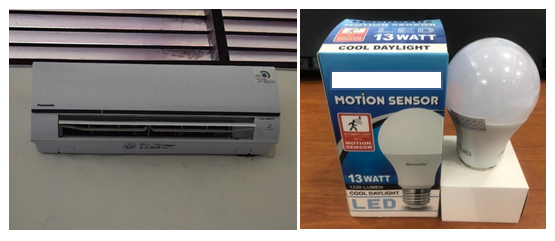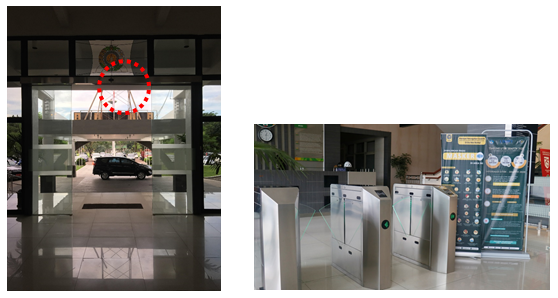In Universitas Sumatera Utara, energy is primarily used for powering home appliances and electronic devices such as lamps, computers, projectors, refrigerators, air conditioning units, and electric motors. In recent years, basic home appliances and electronic devices have been gradually replaced by energy-efficient appliances. The photos above are some examples of energy-efficient appliances. Based on a field survey, the usage of appliances and electronic energy is around 30%.
Use of Energy Saving Equipment
USU’s smart building concept adopts an automation system known as the Building Automation System (BAS). Smart Building Automation System refers to the use of information technology and computers to control equipment inside the building. Examples of smart automation include automatic doors, timer systems for automatic light switching at predetermined or set times, automatic fire alarm systems, and automated exterior corridor light timer systems. Several USU buildings also use a centralized monitoring system for air conditioners and electricity control.
Medical gas installation is one of the vital utilities at the hospital which consists of oxygen, CO2, medical compressed air, and vital medical vacuum air with a risk of explosion if the pressure and distribution do not meet the standards. Therefore, a digital-based control system is applied to an integrated gas distribution installation with a digital alarm to monitor risk identification and prevention. A digital medical gas system is highly efficient and economical.
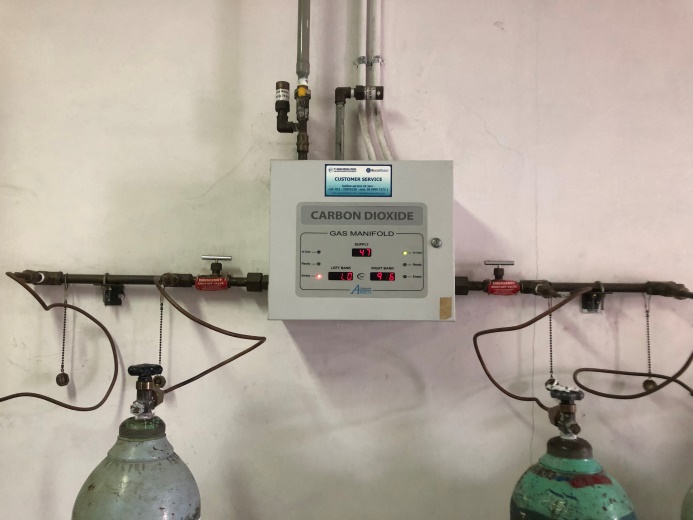
Automatic Alarm for Medical Gas Control Room
Concerning the current pandemic, the University is aware of the importance of a handwashing sink with a hands-free activation method to prevent the spread of the SARS-CoV-2 coronavirus.
USU possesses three renewable energy sources:
- Biogas power plant (Power capacity 10 kW)
- Solar panels (Power capacity 15 kW)
- Speed bump (Combination of Heat and Power) (less than 100 Watt)
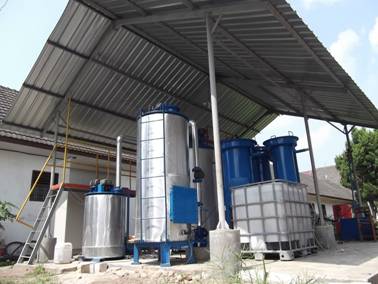
Biogas Plant 1
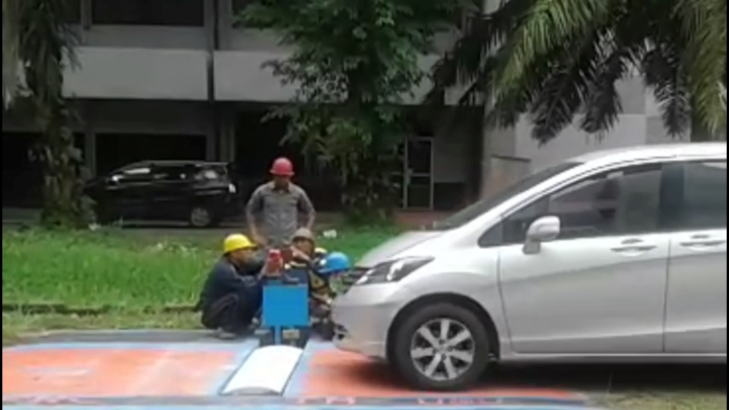
Speed Bump
The biogas power plant is used to convert effluent into biogas. The biogas is used to power generators (Genset) to provide electrical energy during a power outage. Solar Panels are located in the Main Administration Building (10kW capacity), Mechanical Engineering Laboratory (2 kW capacity), UPT Integrated Research Laboratory Rooftop (1 kW capacity), and on-street lamps along the road of Universitas Sumatera Utara (about 2 kW capacity). The energy produced by solar panels is around 50 kWh per day, which equals to 18,000 kWh per year. This totals to 3.48% of the total electricity consumption at USU, which is 516,374 kWh per year. Also, a portion of electrical power produced by speed bumps is used to charge the battery for cell phone charging. Renewable energy generation is shown in the photos above.
The difference in electrical consumption can be felt during the awareness campaign to reduce energy consumption. From October 2019 to September 2020, there was a significant decrease in energy consumption, specifically more than 27% compared to the previous year.
Most of the Universitas Sumatera Utara buildings use natural sunlight for interior lighting. Some of the buildings with a cantilevered floor design provide shade to the floor below to reduce solar thermal heat. The use of natural sunlight can also reduce electrical consumption during the day.
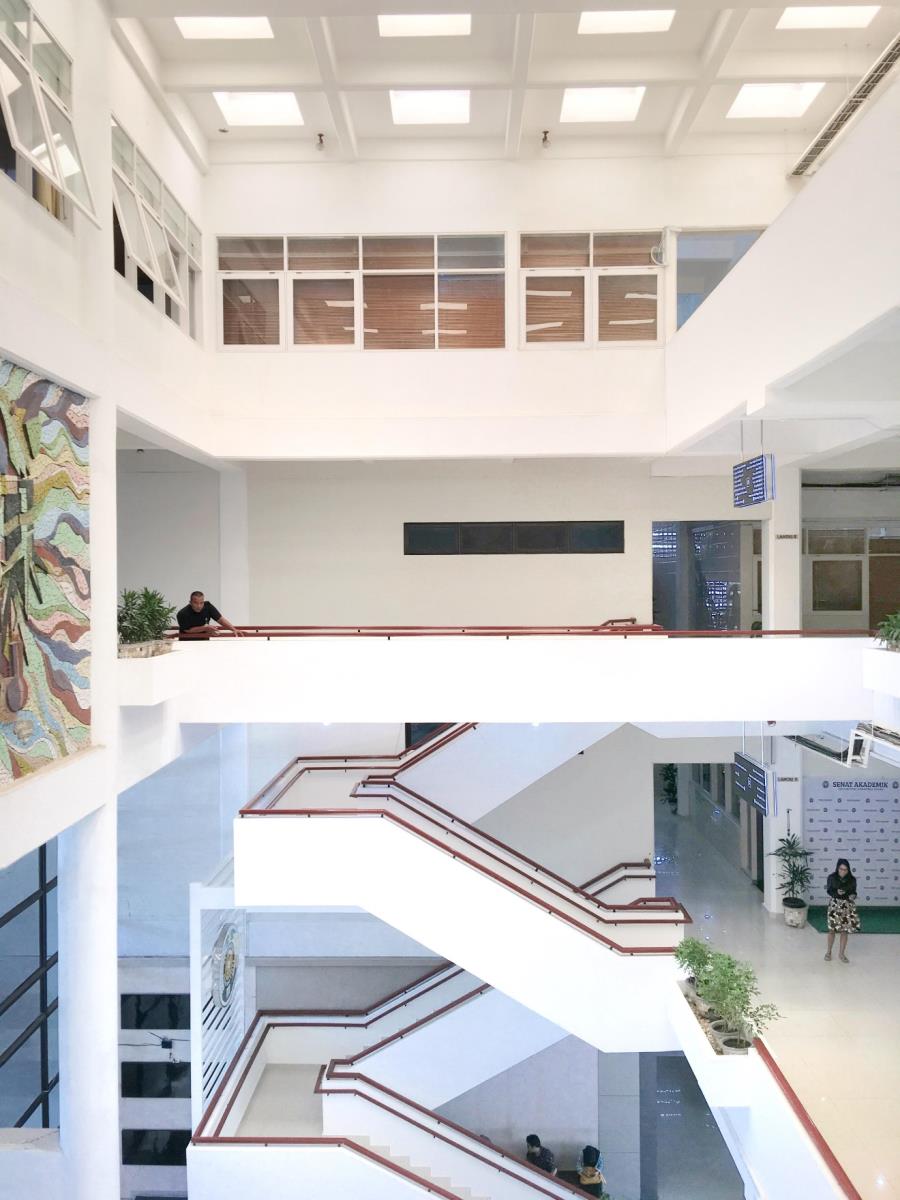
Full Natural Daylighting in the USU Central Administration Building
The USU Teaching Hospital lobby is designed with a hot attic chimney system to allow natural air circulation from the ground floor to the roof. This ensures the lobby stays cool and comfortable without the need to use air conditioners.
Natural ventilation at the hospital occurs due to a difference in air pressure and temperature to drive the air. The design element uses an inner court with a 1:1 height ratio to the building, ensuring the grassy inner court remains shadowed during the day and reduce the micro temperature up to 30C. The temperature difference between the inner court and the outdoor space drives the air through the corridors and hospital rooms.
From March 2020 until now, the campus bus shuttle service is no longer operational due to the COVID-19 pandemic. All students are obliged to study remotely from home and no longer use the service. This decision has suppressed the carbon footprint from buses, cars, and motorbikes. Moreover, classrooms no longer use electricity for lighting or air conditioning. This has reduced the total carbon footprint in Universitas Sumatera Utara to 0.01 Ton CO2 per capita per year.



